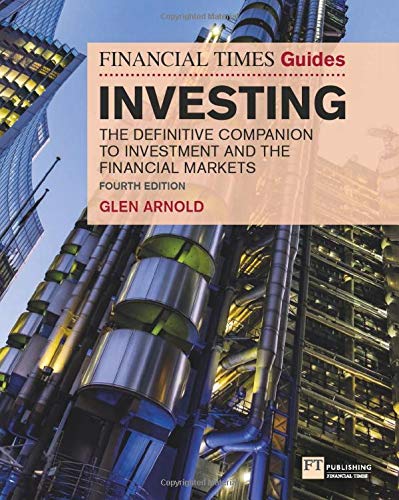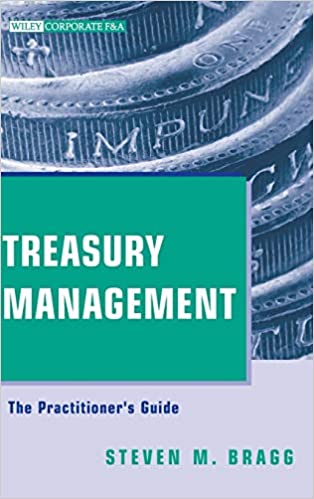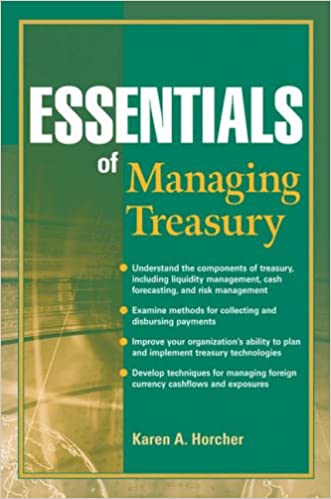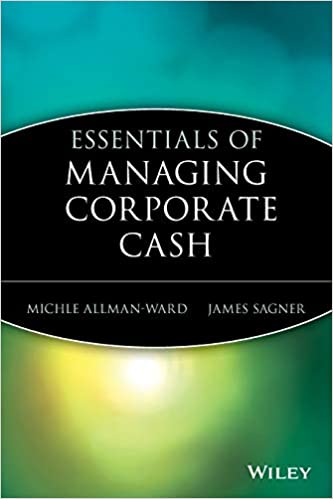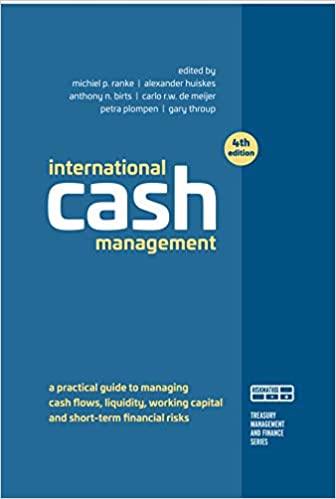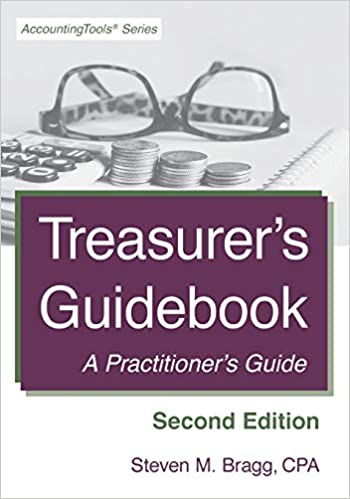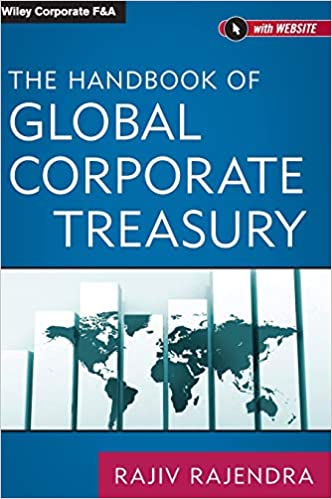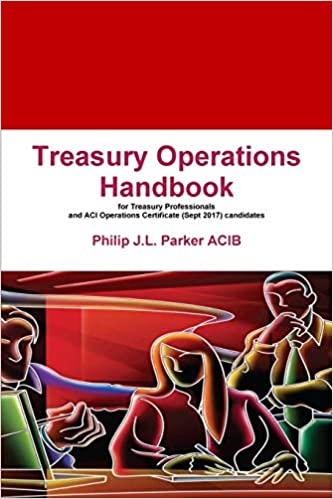Last updated: 20 December 2021. We've ranked the best treasury management books to help you start or advance your career in treasury & cash management.
The treasury department is a cornerstone of the finance team in any business. It deals with the cash flow of the organisation, which includes managing the bank accounts and credit facility, processing payment runs, operating internal controls over cash management, and preparing cash flow forecasts.
This is a blend of administration and strategy. Much of the workload of a treasury team, like many finance teams, is transactional and repetitive. But the Board places a heavy reliance upon the Treasury team to produce credible forecasts, monitor a robust suite of financial controls to reduce the risk of fraud, has strategic importance.
Most of the books featured on this page are beginner friendly and don't assume much prior knowledge. With prices ranging from £10 - £60, stocking up on a few of the best treasury management books can deliver the same value as an expensive seminar for only a fraction of the cost. They can even be read for free with Amazon's Kindle Unlimited free trial.
Click on any title below to see the latest price from Amazon, you'll be shocked at how affordable the most popular titles are. As an Amazon Associate, I earn a small commission from qualifying purchases which helps to support this site. This does not impact how I compile the list. Happy reading!
Discover prime books on investing and finance
No boundaries, just your curiosity- Invest with confidence
- Finance industries
- Real estate & real assets
- Exotic investments
- The bigger picture
Books reviewed
Financial Expert 2024 Book Awards
Gold Prize
Financial Times Guides: Investing by Glen Arnold
Advance treasury management books
Hone your craft and discover advanced treasury management techniquesDownload all these treasury management books for free with Kindle Unlimited
You DON'T even need a Kindle device to download booksHere's a useful tip that will save you £100+ on treasury management books. Sign-up to Amazon's Kindle Unlimited free trial, which offers access to all titles for free for 30 days.
- There's no obligation to continue with a paid subscription.
- You don't even need a Kindle to enjoy - any device will do.
If you're cost-savvy, you'll already be calculating the savings you could unlock and the knowledge you could gain by downloading 5 books over the next 30 days.
My Top 5 Treasury Management Books for 2022
Click covers to see latest reviews and prices1. Treasury Management - Steven M. Bragg
Financial Expert Rating:
Synopsis:
"Treasury Management: The Practitioner's Guide describes all aspects of the treasury function. This comprehensive book includes chapters covering the treasury department, cash transfer methods, cash forecasting, cash concentration, working capital management, debt management, equity management, investment management, foreign exchange risk management, interest risk management, clearing and settlement systems, and treasury systems."
Who this book is for:
Financial Expert Rating:
Synopsis:
"Modern cash management is no longer restricted to the management of business cash flows and account balances. Often, a cash manager works closely with the treasurer and ears responsibility for the management of short-term interest rate and foreign exchange risks as well as some of the company's corporate finance operations and a number of core tasks.
A cash manager plays an important supporting role in the company's working capital management. Since the credit crunch, the environment has changed and the strategic aspects of a cash manager's function have become much more important. However, the significance and relevance of their overall activities remains unchanged.
This fourth edition of the book again provides a fully updated overview of the position and duties of the modern cash manager in an international company."
Who this book is for:
The book is intended primarily for current and future professionals in the corporate treasury and banking sectors who wish to gain practical knowledge of the subject. It is also suitable for students who need a broad general overview of cash management as part of their business economics and administration studies.
Financial Expert Rating:
Synopsis:
"Treasury is the financial hub of an organization-a hub with many spokes. This concise reference describes each functional area within treasury and includes guidelines for best practices and revelant technologies.
With tips and techniques, it provides a practical overview of treasury and its relationship to every part of an organization."
Who this book is for:
An ideal treasury book for beginners learning about the treasury function. Each chapter includes a clear, upfront outline of what you can expect to learn.
An emphasis is placed on educating the reader & encouraging the reader to retain that knowledge.
Financial Expert Rating:
Synopsis:
"The treasurer can provide significant value to a business, not just by managing its money, but also through fundraising activities and proper attention to the management of credit and risk.
The Treasurer's Guidebook shows how to enhance the treasurer position; it does so by discussing how the treasury department’s performance can be organized and fine-tuned, focusing on bank relations, cash concentration systems, investment strategies, financing sources, credit management, insurance, and more."
Who this book is for:
In short, this book is the ultimate toolkit for anyone intending to expand and improve the treasurer position.
Treasurer's Guidebook addresses the administrative aspects of the treasurer’s job, including the accounting for treasury transactions, treasury management systems, controls, and measurements.
This title is Steven M. Bragg's second to feature on this page!
Financial Expert Rating:
Synopsis:
It includes a toolkit that gives practitioners a reference point that they can adapt immediately for use in their firms, providing a low-cost, high-efficiency advisory solution they previously lacked.
- Offers a uniquely global perspective unlike most books on the subject, which tend to focus on the US market
- Incorporates a bottom-up, segmented approach that uses fundamental building blocks to form a comprehensive overview of corporate treasury
Who this book is for:
For CFOs and treasurers looking to re-align their treasuries with the growth of the global firm, bankers who seek to maximize the value they create for clients, treasury and finance firm employees, and even finance students, this book provides an easy-to-read approach to this exciting and increasingly complex world.
The Handbook of Global Corporate Treasury serves as a ready reference for anyone interested in the nuances and practicalities of the complex world of corporate treasury.
The Financial Expert™ Best Treasury Management Book Challenge

I challenge you to read one treasury book per month and see if it revolutionises your investing style!
The Financial Expert™ Best Treasury Management Book Challenge is a well-loved feature of this website.
This challenge is basically a target I suggest any new treasury learner sets themselves when designing their own plan to become a competence and knowledgeable about the treasury function.
So what's the big idea? Well here are the rules:
I challenge you to read one treasury management book per month for the next year, and find your new favourite!
Does 12 books per month feel like a large figure? When you think about it this way, maybe it won't:
One 350 page book will take about 10 hours to read at an average pace. That's about 2.5 hours a week, if you're tackling this challenge head-on and reading one of the best treasury management books each month.
2.5 hours each week is equivalent to a watching a film. Now if I'd ask you to watch one film per week, that wouldn't have felt like a very stretching target, would it?
So why do I recommend that treasury learners commit to a schedule of books? Well, it's because the treasury discipline is as broad as it is complex.
A single treasury management book is unlikely to tick all your boxes in terms of content. Some authors naturally place a greater emphasis on transactional areas, such as making payments, whereas other authors focus on how the treasury function can help the business make decisions.
Some guidance
- I found it helpful to stock up on books for the next few months, so that when a new month rolls around, my next book was my bed-side table asking to be opened!
- Pick a variety of styles. This will keep the challenge fresh and increase the diversity of opinion.
- Pick at least one book that you don't think you would enjoy, this book might be the one that surprises you the most!
- If you're time-starved, audio books are absolutely fine!
Where to begin?
My list of the 5 best treasury management books above is as good as any place to start, as I have consciously included a mix of different writing and investing styles to ensure that it caters to a wide audience.
Good luck!
What do the best treasury management books cover?

" No business in the world has ever made more money with poorer management."
Let's examine the content of the best treasury management books, to help you understand what topics you should be expecting inside your next purchase.
1. The role of the treasury function
Before any process detail is discussed, it's important to appreciate the bigger picture of how a treasury team fits into the rest of a business.
The overlaps with other finance departments, such as the financial and management accounting team, will be numerous, but by understanding the common 'scope' of the treasury department, you'll quickly come to learn the clear expectations that most management teams place upon a treasury management team.
Read more: The best financial management books
Read more: The best management accounting books
Read more: The best finance for non-financial managers books
2. Key treasury transactional processes
There's no getting away from the fact that the best treasury management books will dedicate a good portion of their pages to explain the best practices around common transactions, such as bank payments, cash receipts, inter-bank cash sweeps and so on.
Transactions are the cornerstone of a treasury function, so no team member should be working in a field with such responsibility without understanding the ins and outs of their processes.
3. Combatting fraud with a system of internal control
Integral to the safe and reliable processing of transactions is the internal control framework put in place by either the internal audit manager or the treasury management lead.
Read more: The best internal & external audit books
4. Cash flow forecasting
Where the role of treasury switches from merely processing transactions, to allowing the Board to set their strategy. Cash flow forecasting is a common responsibility of the treasury team, and is vitally important when deciding whether the business can finance capital expenditure, investments or whether it can ride out a storm during poor trading conditions.
5. Financing and liquidity
Treasury management responsibilities often includes owning the relationship with the bank. Companies rely on banks for many treasury services, but perhaps the most important after the current accounts, is any bank loans or revolving credit facilities.
There are a wide array of bank financing options, and the best treasury management books will set these out with helpful pros and cons to highlight the benefits and drawbacks of each.
Setting up a robust financing facility reduces the risk of a company entering administration during periods of cash flow difficulties.
Read more: The best financial risk management books
Explore the best books in more genres
General personal finance
Trading the financial markets



